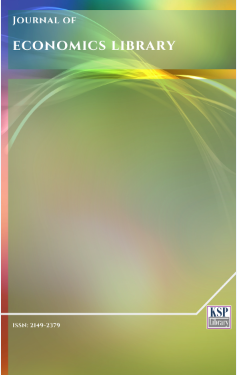Subsidy for New Technology Adoption in Duopoly with Differentiated Goods under Absolute and Relative Profit Maximization
Abstract
Abstract. We present an analysis about subsidy policy for adoption of new technology in duopoly with differentiated goods under absolute and relative profit maximization. Technology itself is free, however, firms must expend fixed set-up costs to adopt new technology. There are various cases about optimal policies depending on the level of the set-up cost and whether the goods of the firms are substitutes or complements. In particular, under relative profit maximization there is a case such that the social welfare is maximized when one firm adopts new technology, but no firm adopts new technology without subsidy. Then, the government should give a subsidy to only one firm. It is a discriminatory policy. The government gives a chance to receive a subsidy to only one firm.
Keywords. Subsidy for new technology adoption, Absolute and relative profit maximization, Duopoly.
JEL. D43, L13.Keywords
References
Gibbons, R., & Murphy, K.J. (1990). Relative performance evaluation for chief executive officers, Industrial and Labor Relations Review, 43(3), 30S-51S. doi. 10.1177/001979399004300303
Hattori, M., & Tanaka, Y. (2014). Incentive for adoption of new technology in duopoly under absolute and relative profit maximization, Economics Bulletin, 34(3), 2051-2059.
Lu, Y. (2011). The relative-profit-maximization objective of private firms and endogenous timing in a mixed oligopoly, The Singapore Economic Review, 56(2), 203-213. doi. 10.1142/S0217590811004201
Matsumura, T., Matsushima, N., & Cato, S. (2013). Competitiveness and R&D competition revisited, Economic Modeling, 31, 541-547. doi. 10.1016/j.econmod.2012.12.016
Pal, R. (2010). Technology adoption in a differentiated duopoly: Cournot versus Bertrand, Research in Economics, 64(2), 128-136. doi. 10.1016/j.rie.2009.11.003
Satoh, A., & Tanaka, Y. (2013). Relative profit maximization and Bertrand equilibrium with quadratic cost functions, Economics and Business Letters, 2(3), 134-139. doi. 10.17811/ebl.2.3.2013.134-139
Satoh, A., & Tanaka, Y. (2014). Relative profit maximization and equivalence of Cournot and Bertrand equilibria in asymmetric duopoly, Economics Bulletin, 34(2), 819-827.
Schaffer, M.E. (1989). Are profit maximizers the best survivors? - a Darwinian model of economic behaviour, Journal of Economic Behavior and Organization, 12(1), 29-45. doi. 10.1016/0167-2681(89)90075-9
Tanaka, Y. (2013a). Equivalence of Cournot and Bertrand equilibria in differentiated duopoly under relative profit maximization with linear demand, Economics Bulletin, 33(2), 1479-1486.
Tanaka, Y. (2013b). Irrelevance of the choice of strategic variables in duopoly under relative profit maximization, Economics and Business Letters, 3(2), 75-83. doi. 10.17811/ebl.3.2.2014.115-126
Vega-Redondo, F. (1997). The evolution of Walrasian behavior, Econometrica, 65(2), 375-384. doi. 10.2307/2171898
DOI: http://dx.doi.org/10.1453/jel.v3i3.989
Refbacks
- There are currently no refbacks.
.......................................................................................................................................................................................................................................................................................................................................
Journal of Economics Library - J. Econ. Lib. - JEL - www.kspjournals.org
ISSN: 2149-2379
Editor: [email protected] Secretarial: [email protected] Istanbul - Turkey.
Copyright © KSP Library

